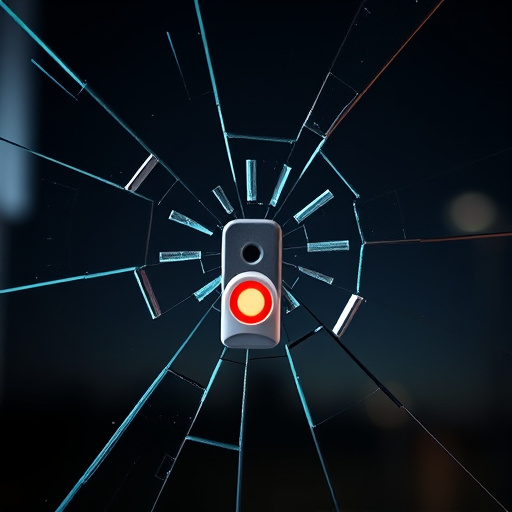Glass break alarm sensors are advanced home security solutions that detect and respond to broken glass, offering early warnings for immediate action. They come in wired and wireless types, with wired sensors providing reliable performance through vibration or acoustic wave detection and wireless sensors offering flexibility and ease of installation. To maximize security, strategically place these sensors near windows and doors, maintain proper battery life, clean them regularly, and periodically test their functionality.
“Uncover the power of home security with a comprehensive guide to glass break alarm sensors—your ultimate line of defense against unauthorized entry. These innovative devices are designed to detect and alert you of any shattering or breaking glass, offering peace of mind like never before. From understanding their intricate workings to exploring wired vs. wireless options, this article demystifies these essential home security tools, empowering you to make informed choices for a safer living space.”
Understanding Glass Break Alarm Sensors: How They Work and Their Benefits
Glass break alarm sensors are innovative home security solutions designed to detect and respond to broken glass, offering a powerful line of defense against potential intruders. These sensors work by utilizing advanced technology to monitor glass surfaces for sudden fractures or breaks. When a glass pane is shattered, the sensor detects the distinctive sound and immediately triggers an alarm, alerting homeowners and nearby security services.
One of the key benefits of glass break alarm sensors is their ability to provide early warning systems, allowing residents to take immediate action. Unlike traditional alarms that solely depend on motion detectors, these sensors are directly linked to glass breakage, ensuring a faster response time. This feature is particularly valuable for high-risk areas or homes with large windows, offering peace of mind and an added layer of protection.
Types of Glass Break Alarm Sensors: Wired vs. Wireless Options
Glass break alarm sensors are an essential component of modern home security systems, designed to detect and alert intruders attempting to break through windows or glass doors. These sensors come in two primary types: wired and wireless options. Wired glass break sensors are directly connected to a home’s security system via cables, offering reliable and consistent performance. They typically use vibration or acoustic waves to detect breaks, with sensors placed strategically on windows or glass surfaces. This traditional approach ensures robust protection but may require more extensive installation due to the wiring involved.
Wireless glass break alarm sensors, on the other hand, offer a more flexible and hassle-free solution. These sensors operate independently, utilizing radio frequency (RF) or wireless technology to communicate with the central control panel. While they might be slightly less reliable in terms of signal strength compared to wired options, wireless sensors are easier to install, making them a popular choice for DIY security enthusiasts. Their portability and compatibility with various security systems make them an attractive option for those seeking a modern, integrated home security solution.
Installing and Maintaining Glass Break Alarm Sensors for Optimal Security
Installing and maintaining glass break alarm sensors is a crucial step in enhancing your home’s security. These innovative devices are designed to detect shattering or breaking glass, providing an immediate alert to potential intruders. When installing, place them strategically near windows and doors, ensuring thorough coverage of vulnerable areas. Proper positioning includes mounting the sensors at eye level and angling them slightly downward to capture any break or crack accurately.
Regular maintenance is key to keeping these sensors effective. Check battery life frequently, as weak batteries can lead to false alarms or sensor failure. Clean the sensors gently with a soft cloth to remove dust or debris that might interfere with their operation. Additionally, test the sensors periodically by simulating a glass break to ensure they trigger promptly and send off reliable signals to your security system.
